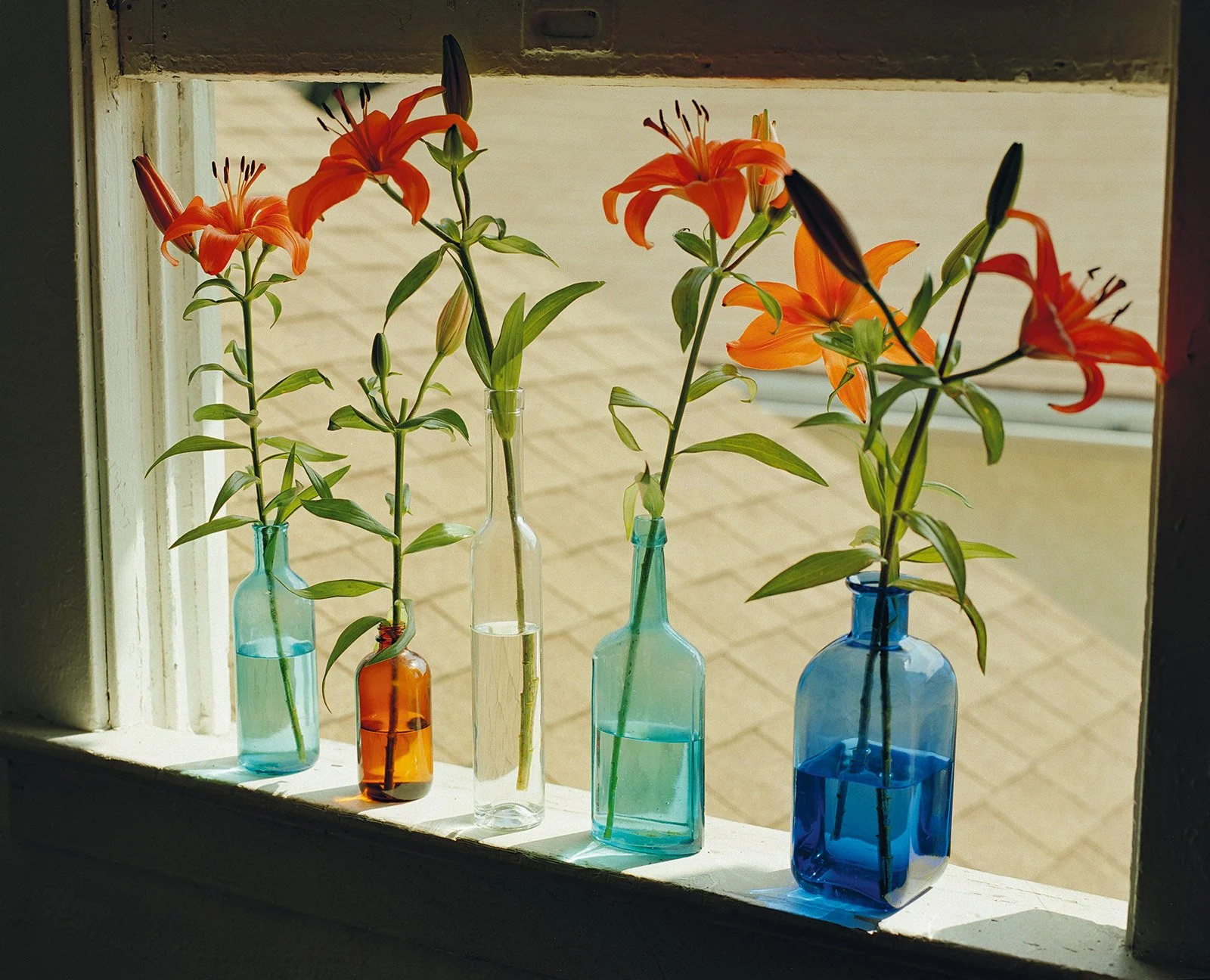Photo Journal Monday: Molly Matalon
@Molly Matalon. From the Series When A Man Loves a Woman
Molly Matalon’s When A Man Loves A Woman operates within a genre of photographs that depict the complicated interplay of desire and vulnerability. Matalon alternately plays audience, director, and participant in staged photographs with male subjects, typically in interior (and historically gendered-female) spaces. These subjects are friends, lovers, and acquaintances, flowers in bloom or decay, ripened or softening fruit, and objects at the emotional interstice of enjoyment and disgust. The photographs often catalogue ephemeral encounters and consumable natural objects, easy emblems of love, fertility, and beauty arranged in domestic settings or apt sites for a first date. While they truck in the popular language of what love, desire, and intimacy look like, this belies a more complicated origin.
@Molly Matalon. From the Series When A Man Loves a Woman
Drawing from the male-dominated history of “straight photography,” Matalon’s images have a seductive clarity that evokes how our perceptions are sharpened in the excitement of an erotic encounter, and how those encounters are packaged and marketed back to us. But the intimacy being proffered by the subject or conjured by Matalon is rarely explicitly sexual, but rather quiet, vulnerable, tenderly perverse, akin to the tentative probing of someone seeking intimacy rather than a confident recounting of conquests by someone who has found it. The photos are a reciprocal performance: the chance for Matalon to create a close atmosphere with a subject under the pretext of a photo, and a chance for that subject to express their hope to be desired by a future audience. It is a collection less about the friction of bodies, which are often formally isolated in Matalon’s compositions, than the vivid and vivifying frisson of encounter.
@Molly Matalon. From the Series When A Man Loves a Woman
While Matalon is delicate to never skewer the performers in her photographs, she often skews her depiction of them toward revelations about how they wish to be seen. Matalon’s photographs thereby represent a collaboration in which, as Chelsea Hodgson says in her essay, she graciously permits her subjects to feel they are inventing seduction. They act as a typology of what and whom Matalon desires, staged to reflect that desire back toward the camera. They are not expressions of the girlboss’s demand to get what she wants, but instead a woman’s assertive, unresigned, and collaborative seeking toward forms of intimacy on the terms most available to her.
@Molly Matalon. From the Series When A Man Loves a Woman
Matalon’s subjects are friends and friends-of-friends, casual lovers or acquaintances standing in as such, people to whom she has felt an attraction that is often, in her own telling, unrequited. When A Man Loves A Woman is less a typology of men than the fluid reckoning of a woman pursuing, through the vehicle of photography, an expression and clarification of her own desire, and a celebration of the medium’s capacity to make desire — for beauty, durability, youth, affection, and admiration — manifest. Her photographs don’t sully or tarnish the thing, but rather look carefully at how a miraculous and living wetness can emerge from within the dusty modes and models of how we strive to love and be loved.
@Molly Matalon. From the Series When A Man Loves a Woman
To leare more, visit Molly Matalon’s website.












